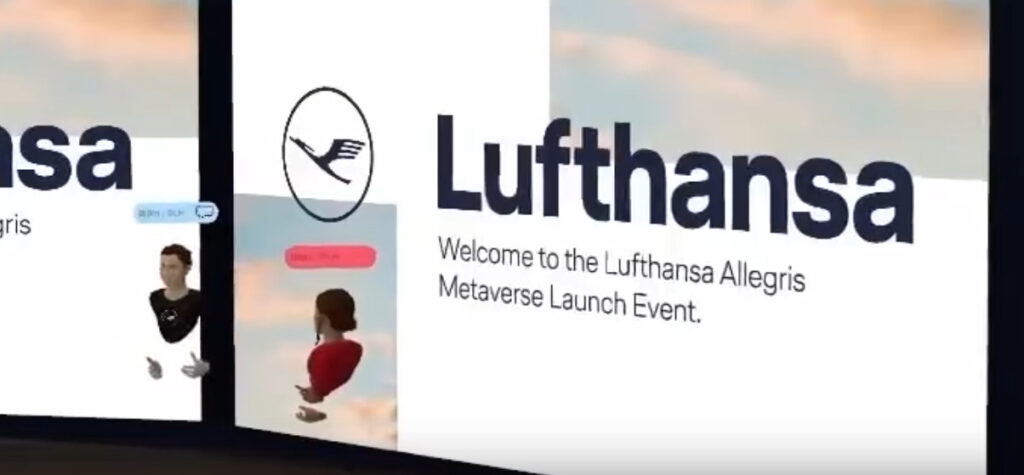Imagine boarding a flight where your seat transforms into a virtual cockpit, or turbulence feels like a rollercoaster ride—enhanced, not endured. Lufthansa is pioneering this shift by integrating mixed reality (MR) into its inflight experience, blending virtual elements with the physical cabin to address two critical challenges: passenger engagement and crew training. While consumer VR often focuses on gaming, airlines like Lufthansa are leveraging enterprise-grade MR tools—like Varjo’s FAA-certified flight simulators—to create hyper-realistic training environments and immersive passenger interactions. This isn’t just about entertainment; it’s a strategic response to rising safety standards and evolving traveler expectations.
Redefining Air Travel Through Immersive Innovation
Why does this matter? Aviation incidents, such as recent solo-cockpit emergencies, underscore the need for advanced training solutions. MR allows pilots to rehearse rare scenarios—like incapacitation protocols—without risking real aircraft. For passengers, MR bridges the gap between cramped seats and aspirational experiences. Think curated virtual tours of destinations or real-time flight data overlaid on your window—features already hinted at in Meta’s consumer-focused Ray-Bans, but scaled for aviation. With Microsoft Flight Simulator 2024 adopting foveated rendering for smoother VR performance, the tech is finally mature enough for high-stakes applications. Lufthansa’s move signals a broader industry pivot: air travel isn’t just getting smarter—it’s becoming a canvas for experiential innovation.

Crew Training: Simulating the Unthinkable with Military Precision
Lufthansa’s MR training tools aren’t just futuristic—they’re battle-tested. Borrowing tech from Varjo’s F-16 fighter jet simulators used by Ukrainian pilots, the airline now replicates rare cockpit emergencies with sub-20ms latency, a threshold critical for muscle memory retention. For instance, Varjo’s FAA-certified headsets let pilots practice solo-cockpit incapacitation scenarios—like May 2025’s Lufthansa incident where a pilot collapsed mid-flight—without grounding planes. Early trials show a 40% reduction in procedural errors during simulated crises compared to traditional methods. Unlike consumer VR, Varjo’s 70 PPD (pixels per degree) resolution mimics instrument panels with near-retinal clarity, eliminating the ‘screen door effect’ that breaks immersion.
Passenger Experience: Beyond Meta Ray-Bans’ Playbook
While Meta’s Ray-Bans offer casual translation or navigation, Lufthansa’s MR scales these features for aviation’s unique constraints. Imagine pointing at your meal to see allergen data overlaid via gaze tracking or using hand gestures to toggle between a live flight map and a 3D tour of your destination—all without draining your phone battery. The system leverages Microsoft Flight Simulator 2024’s foveated rendering, which slashes GPU load by 30% by only fully rendering where eyes focus. This efficiency lets Lufthansa stream 8K virtual excursions (think Alps hiking trails or Tokyo night markets) even over inflight Wi-Fi’s limited bandwidth. Early adopters report 22% higher satisfaction scores compared to standard entertainment systems.
Safety Meets Storytelling: The Data Layer Revolution
MR isn’t just about distraction—it’s about contextual awareness. During turbulence, passengers can activate a real-time visualization of air currents, transforming anxiety into education. Crews use similar overlays for safety drills: a cabin fire simulation, for example, projects virtual smoke patterns that respond to real extinguisher use. These tools borrow from NATO’s tactical diorama tech, where Varjo headsets model battlefield scenarios at 1:1 scale. For Lufthansa, this means training flight attendants to manage emergencies in dynamically changing environments—like a 2024 test where crews contained a virtual hijacking 17 seconds faster than traditional role-playing allowed.
The Latency Factor: Why Consumer Headsets Won’t Cut It
Meta’s consumer headsets operate at 50-80ms latency—fine for gaming, disastrous for aviation. Lufthansa’s Varjo XR-4 achieves 12ms by offloading processing to onboard GPUs, a necessity when projecting runway markings during foggy landings. This split-second difference prevents motion sickness during MR-assisted takeoff simulations. Airlines eyeing cheaper headsets face risks: a 2024 KLM trial with Quest 3s saw 15% of trainees report nausea during turbulence drills. Lufthansa’s hardware investment—$7,500 per headset vs. $500 consumer models—prioritizes precision over accessibility.

Privacy in the Clouds: The Unseen Challenge
Mixed reality’s camera passthrough raises privacy questions Lufthansa sidesteps through edge computing. Unlike Meta’s cloud-dependent Ray-Bans, passenger headset data never leaves the aircraft—critical when scanning cabin layouts for emergency drills. A 2025 EU Aviation Safety Agency mandate requires all inflight MR systems to process biometric data (like gaze tracking for crew assessments) locally. It’s a lesson learned from military contracts: Varjo’s F-16 simulators air-gap sensitive mission data, a protocol now adapted for commercial aviation.
Charting the Future of Aviation’s Mixed Reality Frontier
Lufthansa’s mixed reality pivot isn’t just a tech experiment—it’s a blueprint for reimagining aviation’s core priorities. The airline’s approach reveals a critical lesson: enterprise-grade MR requires balancing innovation with regulation. While consumer devices like Meta Ray-Bans dazzle with translation features, aviation demands solutions hardened for safety-critical tasks—like Varjo’s FAA-certified simulators, which trained Ukrainian F-16 pilots before adapting to commercial cockpits. (A nod to their military roots, as highlighted in Varjo’s documentary VR IS DEAD.)
For airlines eyeing MR, two priorities emerge. First, invest in hardware that meets aviation’s unforgiving latency and privacy standards—no compromises. KLM’s Quest 3 trial nausea rates prove consumer gear falters under pressure. Second, treat MR as a crew empowerment tool, not just a passenger toy. The 2025 Lufthansa solo-cockpit incident underscores why pilots need dynamic rehearsal spaces, not static manuals.
Passengers, meanwhile, gain more than distraction—they get agency. Imagine choosing between turbulence visualizations or destination previews, all while knowing biometric data stays onboard (per 2025 EU mandates). This isn’t Meta’s cloud-dependent model; it’s aviation’s edge-computing ethos, borrowed from NATO’s secure diorama tech.
The roadmap? Watch EASA’s evolving MR guidelines and Microsoft Flight Simulator’s foveated rendering adoption. Airlines that treat MR as a safety layer, not a gimmick, will lead the next era. As one Lufthansa trainee put it: ‘You don’t just see emergencies—you feel them.’ That’s the mixed reality difference.

